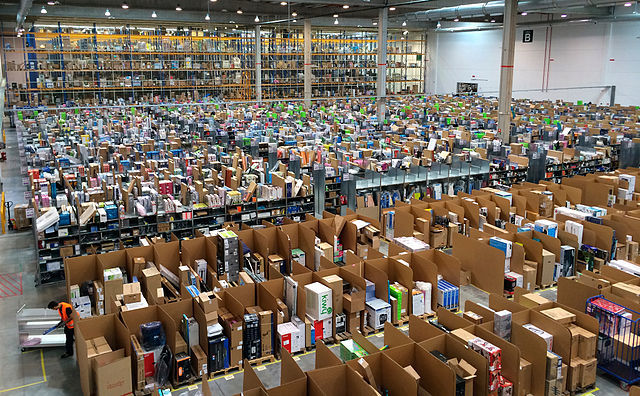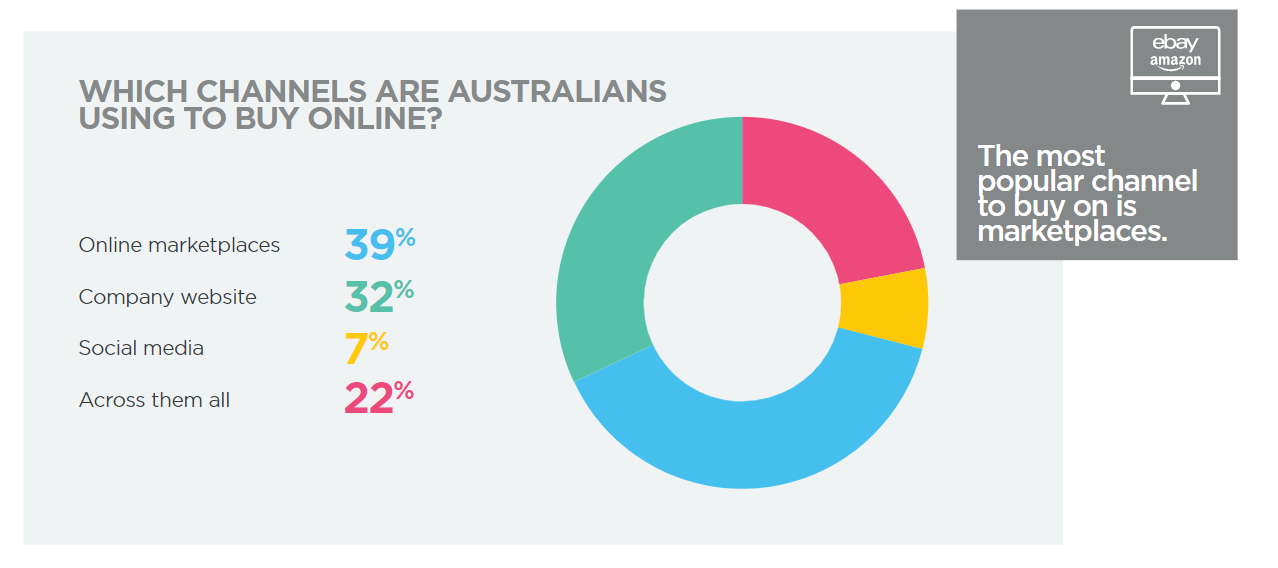
Business • Marketplaces

Since Amazon’s announced they were expanding to Australia monthly searches for “Amazon” have risen by 93% , and as Amazon begins to build momentum in Australia, it may be worth considering just why so many businesses are incorporating the platform into their ecommerce strategy.
Today’s post will explore 10 of the top reasons to sell on Amazon Australia.
Amazon has a global portfolio of 11 Marketplaces that sell into over 180 countries, 310 million active users in the US, and a net revenue of US$135.99 billion in 2016 alone.

A reported 55% of shoppers go straight to Amazon to look for products without checking other search engines or sites first. This is up 14% from 2012, and that number is expected to further increase with Amazon’s expansion into Australia, their AmazonFresh grocery delivery service and their ‘no queues, no checkout’ supermarket concept stores, Amazon Go.
That’s some decent figures!
But most importantly, for retailers thinking about selling on the platform, what these numbers really mean is that you will benefit from Amazon’s global and trusted brand. If shoppers trust Amazon as their go-to shopping platform, then they are more likely to trust your company listings on the Amazon platform and buy from you.
| Related Reading: Selling on Amazon: Fact vs. Fiction
Amazon customers tend to be mobile-first millennials who double as impatient, demanding shoppers quick to click away from any experience that doesn’t deliver immediate value. And Amazon is an attractive place to sell on because it’s an attractive place to buy on—it’s an intuitive and fast platform, with quality customer service and trusted fulfillment.
Additionally, product reviews and seller ratings help to regulate the quality of products and sellers on Amazon, so customers trust that they will receive a good product, on time, as described.
It is also really easy for customers to find products on Amazon because of the simple search infrastructure. Unlike Google, Amazon encourages long titles, product descriptions and keywords, which, in combination with set product categories, makes it easy for buyers to find products that meet their needs.
With the billions of product searches beginning on Amazon every day, and the platform delivering such a seamless shopping experience, if you are looking for new customers, chances are they will be looking at Amazon.
Selling on Amazon will give you exposure to customers who otherwise might not have stumbled upon your website and bought from you. e.g.
That’s great, but what about the shoppers who don’t start their search on Amazon? Well in the US Google searches return Amazon products at the top of search results anyway because the Amazon domain carries a lot of authority. Because of this, many sellers get more business from their Amazon listings than from their websites, and if the same happens in Australia then you will have first dibs on Australia’s domestic online market.
Although Amazon are notorious for limiting your capacity to entice buyers back to your website, you will nevertheless expose your brand and products to new people.

| Related Reading: How to Sell on Amazon Australia and Other Amazon FAQs
When you start selling online through a website sales tend to be slow at best, with half the battle lying in getting people to actually visit your website. With Amazon in the US you can be up and running and making sales within days. if you’re using a product like Neto’s retail management platform, you can easily manage your Amazon orders and inventory from the same platform as your webstore.
Amazon is constantly pushing the bar with innovation. In the last couple of years they have launched the new Amazon Go supermarket concept stores in the US, opened dozens of new fulfilment centers, delivered an order via drone in the UK and introduced voice-commerce to the world with Amazon Alexa. Smaller retailers with neither the capacity nor the budget to deliver such innovation can instead tap into Amazon’s own technologies, reaping the rewards in the form of sales.
Fulfilment by Amazon (FBA) allows sellers to tap into Amazon's robust infrastructure of fulfillment centres, giving them the flexibility to sell just about anything without physically holding inventory. The value of this option for retailers will depend on both size of operations as well as the number of channels and volume of sales coming through those channels.
The customer is at the core of everything Amazon does; their vision statement reads ‘We seek to become Earth’s most customer centric company’ and they’ve been ranked number one in customer service for almost a decade in online retail. So, you can be assured (and so can customers) that whether the customer service comes from you or Amazon directly, it will always be top notch!
Part and parcel of this high standard of customer service are the strict regulations around the interactions you have with buyers with respect to response times, delivery times and returns. For example, Amazon requires all customer messages to be responded to within 24 hours, and metrics are tracked in your Seller Central Dashboard so you can always see how you’re performing.
For sellers selling on Amazon FBA, Amazon takes care of all the customer support for you—from shipping notifications to cancellations and returns.

Within your seller profile there are a number of metrics and data tracking tools that you can make use of to inform your business or marketing strategy. This includes data on customer locations, keywords and product searches, sales and reviews.
If you are wanting to test the market for a new product, then look no further than Amazon to find stats on search volume, pricing and competing products.
Selling on the Amazon Marketplace in Australia costs $49.95 per month, plus 6-15% of completed sales (depending on the product category you sell in). Given the brand exposure and increase in traffic that Amazon’s trusted badge provides, this is a solid deal. New sellers and startup brands can use this opportunity to try out the market without having to pay for costly rental or consignment fees in physical stores
As an Amazon Seller, you get access to helpful resources and a knowledge base in Seller Central to help ensure your business is set up for success. Seller University provides helpful instructional videos and useful insights into the Amazon marketplace so you can easily grow your business. There are also a bunch of non-official seller forums where you can find answers to almost any question.
Last, but definitely not least, is that shoppers like using marketplaces. In a survey we conducted with Telstra of 1001 online shoppers we found that the most popular channel to buy on was marketplaces like Amazon, eBay and Etsy. And as a seller you need to be where your customers are.

Whether you’re wanting to expand your ecommerce business, you’re an established bricks and mortar retailer looking to get online, or perhaps you’re just starting out, Amazon’s platform is a great way to expose your brand to new customers and increase sales.
Right now, first mover advantages with regards to pricing, building up a seller history and winning the coveted ‘Buy Box’ are still ripe for the picking, but if you're selling across multiple sales channels, it's vital that you can manage your listings, inventory and sales orders from a single platform (otherwise things can really messy, really quick!).
Check out our article Get set up for Amazon Success or download our guide Everything you need to know about Amazon Australia to learn, well, everything you know about Amazon before you start selling.

Neto is the first Australian all-in-one retail management platform that integrates with Amazon Australia, allowing retailers to easily manage their Amazon Australia listings, customers, orders and inventory from the same platform as their existing channels. Thousands of Neto retailers are already selling on Amazon Australia and you can too. if you’re keen to get started, Book a demo start a free trial or speak to one of our sales team.